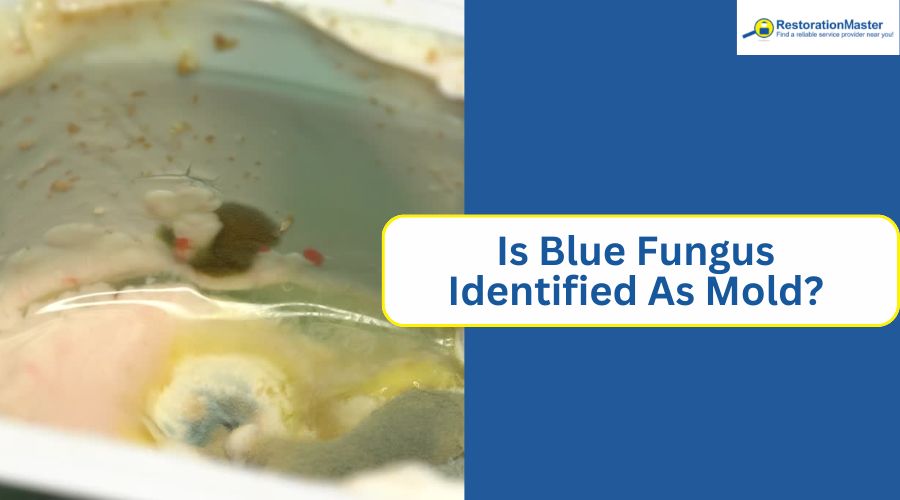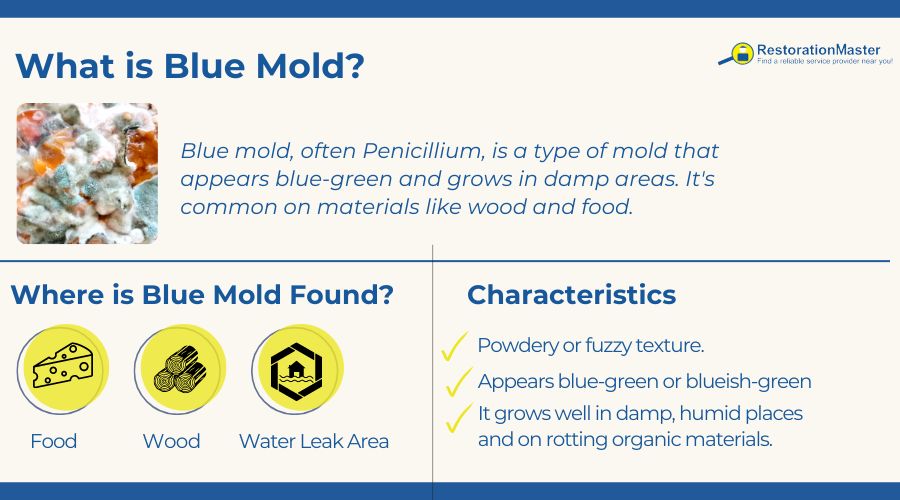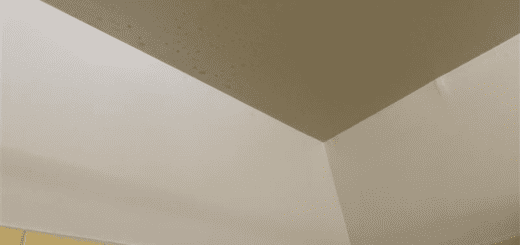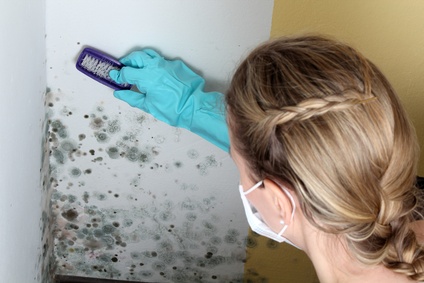Can Mold Be in Blue Color? How Harmful It is?
In the world of fungiFungi are a group of organisms, including mold, mildew, and ... More, most people are familiar with the common moldMold is a type of fungus that grows in damp or humid conditi... More types that invade our homes, like the infamous black moldMold is a type of fungus that grows in damp or humid conditi... More. However, another intriguing and lesser-known type of moldMold is a type of fungus that grows in damp or humid conditi... More is the blue fungus. This strikingly colored moldMold is a type of fungus that grows in damp or humid conditi... More can sometimes be found in various environments, raising questions about its identification, potential harm, and how to manage it. Consisting of over 100,000 species, moldMold is a type of fungus that grows in damp or humid conditi... More sporesSpores are microscopic reproductive units of fungi or mold t... More come in a variety of colors—even blue. Spotting blue moldMold is a type of fungus that grows in damp or humid conditi... More inside the home should prompt the homeowner to begin immediate mold remediation.

What Colors are Various Molds?
Molds exhibit a diverse palette of colors, each representing different species and hinting at the conditions they thrive in. Common household molds include the notorious black moldMold is a type of fungus that grows in damp or humid conditi... More (StachybotrysStachybotrys is a type of black mold (often called “black ... More Chartarum), recognized by its dark greenish-black color and linked to severe health problems. Green molds, such as Aspergillus and Cladosporium, often appear on food or damp surfaces, creating a greenish layer. Some moldMold is a type of fungus that grows in damp or humid conditi... More appears black or gray, while others emit purple, brown, orange, yellow, or pink hues. Different types of molds can be a mixture of colors.
What Gives Mold its Color?
A range of factors influence the color of moldMold is a type of fungus that grows in damp or humid conditi... More. The age of the moldMold is a type of fungus that grows in damp or humid conditi... More can determine its color. Likewise, environmental conditions, like food sources, amounts of light, and humidityHumidity is the amount of moisture or water vapor present in... More levels, impact its colors. The color of a patch of moldMold is a type of fungus that grows in damp or humid conditi... More changes with alterations to its environment or as it matures.
Can Mold Be in Blue Color?
Yes, moldMold is a type of fungus that grows in damp or humid conditi... More can definitely appear in blue. Blue moldMold is a type of fungus that grows in damp or humid conditi... More is often seen in species from the Penicillium family, which commonly show up on spoiled foods like fruits, bread, and cheese. This type of moldMold is a type of fungus that grows in damp or humid conditi... More is characterized by its distinct blue or blue-green color, making it relatively easy to spot. Although it doesn’t have the same notorious reputation as black moldMold is a type of fungus that grows in damp or humid conditi... More, blue moldMold is a type of fungus that grows in damp or humid conditi... More can still be harmful, especially for those with allergies or respiratory conditions. When blue moldMold is a type of fungus that grows in damp or humid conditi... More appears indoors, it is usually the dominant type.
It is a prevalent type of indoor moldMold is a type of fungus that grows in damp or humid conditi... More; it grows easily inside the home because it does not require a significant amount of moisture. Blue-green moldMold is a type of fungus that grows in damp or humid conditi... More also commonly infests citrus plants.

What Characteristics Belong to Blue Mold?
Blue moldMold is a type of fungus that grows in damp or humid conditi... More shares both unique and common characteristics with other types of molds, but its distinctive blue color sets it apart. In addition to its color, blue moldMold is a type of fungus that grows in damp or humid conditi... More typically exhibits a velvety or powdery texture, giving affected surfaces a soft and sometimes fuzzy appearance. Unlike some molds that spread in irregular patches, blue moldMold is a type of fungus that grows in damp or humid conditi... More tends to grow in circular patterns, which can rapidly expand across organic materialsOrganic materials are derived from living organisms, such as... More like food items or damp surfaces in indoor environments.
Where is Blue Mold Found?
Blue moldMold is a type of fungus that grows in damp or humid conditi... More, or Penicillium spp., can be found in various environments, especially those with organic matter like food, soil, and decaying plant material. Here are some common places where you might find blue moldMold is a type of fungus that grows in damp or humid conditi... More:
- Food: Blue moldMold is a type of fungus that grows in damp or humid conditi... More can grow on a variety of foods, including bread, cheese (like blue cheese), fruits, and vegetables. It thrives in moist conditions and can rapidly spread on these organic substrates.
- Damp Areas: It likes high humidityHumidity is the amount of moisture or water vapor present in... More and poor ventilated area. This includes bathrooms, basements, attics, and kitchens, especially around sinks, faucets, and leaking pipes.
- Indoor Surfaces: It can appear on indoor surfaces such as walls, ceilings, carpets, and upholstery, especially if there has been water damage or prolonged exposure to moisture.
- Outdoor Environments: Blue moldMold is a type of fungus that grows in damp or humid conditi... More can also be found outdoors on decaying plant matter, soil, compost heaps, and in gardens where conditions are favorable for its growth.
- HVAC and AC: It can also grow within HVAC systems, particularly within the indoor unit of air conditioners, the drain pan, and the network of ductwork.
Homeowners should be aware that blue moldMold is a type of fungus that grows in damp or humid conditi... More, like any other type of moldMold is a type of fungus that grows in damp or humid conditi... More, can grow in out-of-sight places. It is not uncommon for blue moldMold is a type of fungus that grows in damp or humid conditi... More to flourish behind the walls, under carpets, and above the ceilings. Hidden moldMold is a type of fungus that grows in damp or humid conditi... More is more challenging to find without professional equipment.
What Does Blue Mold Feed On?
While blue moldMold is a type of fungus that grows in damp or humid conditi... More does not require a great deal of water, moisture is required for its survival. Due to this reason, poorly ventilated and damp areas are ideal for rapid growth. The blue moldMold is a type of fungus that grows in damp or humid conditi... More sporesSpores are microscopic reproductive units of fungi or mold t... More feed on organic materialsOrganic materials are derived from living organisms, such as... More, such as drywall, wood materials, paper, food, and fabric.
Is Blue Mold Harmful?
Yes, blue moldMold is a type of fungus that grows in damp or humid conditi... More carries a significant level of toxicity comparable to black moldMold is a type of fungus that grows in damp or humid conditi... More, also known as StachybotrysStachybotrys is a type of black mold (often called “black ... More chartarum. Inhaling its sporesSpores are microscopic reproductive units of fungi or mold t... More can trigger lung inflammation, food poisoning, chest discomfort, allergic and sinus infections. The spread of Blue MoldMold is a type of fungus that grows in damp or humid conditi... More is 2x faster than any other moldMold is a type of fungus that grows in damp or humid conditi... More. Ramalingam et al. (2019) found that certain strains of Penicillium expansum, the fungus responsible for blue moldMold is a type of fungus that grows in damp or humid conditi... More, release patulin, a mycotoxin known for its mutagenic, neurotoxic, and gastrointestinal effects.
Those with compromised and sensitive immune systems, asthma, allergies, along with children, pets and the elderly, are particularly susceptible to the adverse effects of blue moldMold is a type of fungus that grows in damp or humid conditi... More exposure.
What Health Conditions Can Blue Mold Cause?
While there isn’t a specific set of symptoms exclusive to blue moldMold is a type of fungus that grows in damp or humid conditi... More sickness, here are some common signs:
- Respiratory Symptoms: These can include coughing, wheezing, shortness of breath, and frequent respiratory infections. Individuals with asthma or other respiratory conditions may experience exacerbation of their symptoms.
- Allergic Reactions: MoldMold is a type of fungus that grows in damp or humid conditi... More can trigger allergic responses as sneezing, runny nose and watery eyes.
- Neurological Symptoms: Some people may experience neurological symptoms such as headaches, difficulty concentrating, memory problems, confusion, and mood swings.
- Digestive Issues: MoldMold is a type of fungus that grows in damp or humid conditi... More toxicity may also affect the digestive system, causing symptoms like nausea, vomiting, abdominal pain, diarrhea, and changes in appetite.
- Musculoskeletal Symptoms: Individuals exposed to moldMold is a type of fungus that grows in damp or humid conditi... More may experience muscle aches, joint pain, stiffness, and general weakness or fatigue.
- Skin Problems: Skin irritation, rashes, itching, or other dermatological issues may occur in some individuals as a result of moldMold is a type of fungus that grows in damp or humid conditi... More exposure.
- Sensory Symptoms: Mold-related illness can sometimes affect the senses, leading to issues such as sensitivity to light or sound, ringing in the ears (tinnitus), and changes in taste or smell.
- Psychological Symptoms: Some individuals may experience mood disturbances, anxiety, depression, irritability, or other psychological symptoms as a result of moldMold is a type of fungus that grows in damp or humid conditi... More exposure.
How to Remove Blue Mold?
It is important to clean up small colonies of blue moldMold is a type of fungus that grows in damp or humid conditi... More from the property to avoid the health risks and maintain a hygienic living space. First, prepare the room for moldMold is a type of fungus that grows in damp or humid conditi... More cleanup by moving all furniture and items away from the moldy areas. Use a disinfectantA disinfectant is a chemical substance used to kill or inact... More to clean the surfaces.

Follow the disinfection with a commercial moldMold is a type of fungus that grows in damp or humid conditi... More removal product. Choose a moldMold is a type of fungus that grows in damp or humid conditi... More cleaner that kills moldMold is a type of fungus that grows in damp or humid conditi... More and prevents it from returning. Discard fabrics, carpets, and other items infested with blue moldMold is a type of fungus that grows in damp or humid conditi... More in a sealed bag to prevent the sporesSpores are microscopic reproductive units of fungi or mold t... More from becoming airborne and contaminating other areas.
Clean the affected places with bleach, being careful to follow the instructions for use on the label. Bleach is effective in killing moldMold is a type of fungus that grows in damp or humid conditi... More and prevents it from returning. Monitor the furniture and surfaces that had previously been infested with blue moldMold is a type of fungus that grows in damp or humid conditi... More colonies.
How to Prevent Blue Mold?
Preventing blue moldMold is a type of fungus that grows in damp or humid conditi... More from proliferating inside the home can be achieved through a combination of humidityHumidity is the amount of moisture or water vapor present in... More control, proper insulationInsulation is a material used in buildings to reduce the tra... More, and optimum ventilationVentilation is the process of exchanging or circulating air ... More. Keeping humidityHumidity is the amount of moisture or water vapor present in... More levels below 60 percent is crucial. Insulating pipes, roofs, and walls helps maintain consistent indoor temperatures and prevents condensation.
Promoting good airflow by running exhaust fans in the kitchen and bathrooms is essential. Opening windows when weather permits increases ventilationVentilation is the process of exchanging or circulating air ... More. Remember, blue moldMold is a type of fungus that grows in damp or humid conditi... More is unable to grow in dry and well-ventilated spaces. If the home becomes wet, it should be dried within 24 to 48 hours to prevent moldMold is a type of fungus that grows in damp or humid conditi... More growth.
Regular cleaning and dusting reduce the organic food sources available to moldMold is a type of fungus that grows in damp or humid conditi... More. Early detection of leaks around windows or plumbing through routine inspections is important. Additionally, venting appliances like the dryer and stove to the outside rather than into the attic is advisable.
Can Blue Mold Be Tested?
RestorationRestoration is the process of returning a property to its pr... More Professionals have a method for testing blue moldMold is a type of fungus that grows in damp or humid conditi... More. They start by gathering samples from areas that might be contaminated, using sterilized equipment. They’re really careful to handle the samples so they don’t accidentally mix them up with anything else. Then, they put the samples on the right kind of stuff to grow on. After a while, they check to see if there’s any moldMold is a type of fungus that grows in damp or humid conditi... More growing, especially if it’s blue. Sometimes, they even look at the samples under a microscope to be sure. Once they’ve got all the info, they figure out if there’s blue moldMold is a type of fungus that grows in damp or humid conditi... More and how bad the problem is.
Let Professionals Remediate Mold
When you face an infestation of blue moldMold is a type of fungus that grows in damp or humid conditi... More or any other type of moldMold is a type of fungus that grows in damp or humid conditi... More, consult the moldMold is a type of fungus that grows in damp or humid conditi... More removal pros. Highly trained crews are equipped with advanced equipment to detect all moldMold is a type of fungus that grows in damp or humid conditi... More growth. Professional removal is especially advised when moldMold is a type of fungus that grows in damp or humid conditi... More infestations are ten square feet or more.
Once the moldMold is a type of fungus that grows in damp or humid conditi... More infestation is detected via infrared technology, technicians isolate the space with plastic sheeting to prevent cross-contaminationCross-contamination occurs when harmful substances, such as ... More to other parts of the home. They also identify and repairRepair is the act of fixing or restoring damaged property, m... More the water source to prevent the moldMold is a type of fungus that grows in damp or humid conditi... More from reoccurring.
Specialists develop and implement a mold remediation plan to eliminate all traces of concealed and visible colonies. After moldMold is a type of fungus that grows in damp or humid conditi... More cleanup, they restore surfaces damaged by the moldMold is a type of fungus that grows in damp or humid conditi... More growth. The findings from the moldMold is a type of fungus that grows in damp or humid conditi... More cleanup assessment are reported to your insurance company to help accelerate claims.












